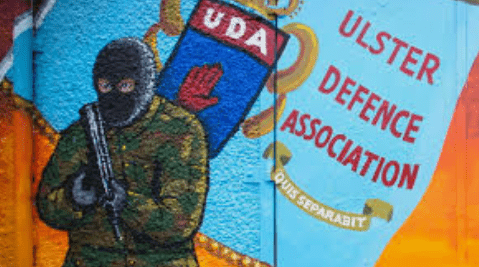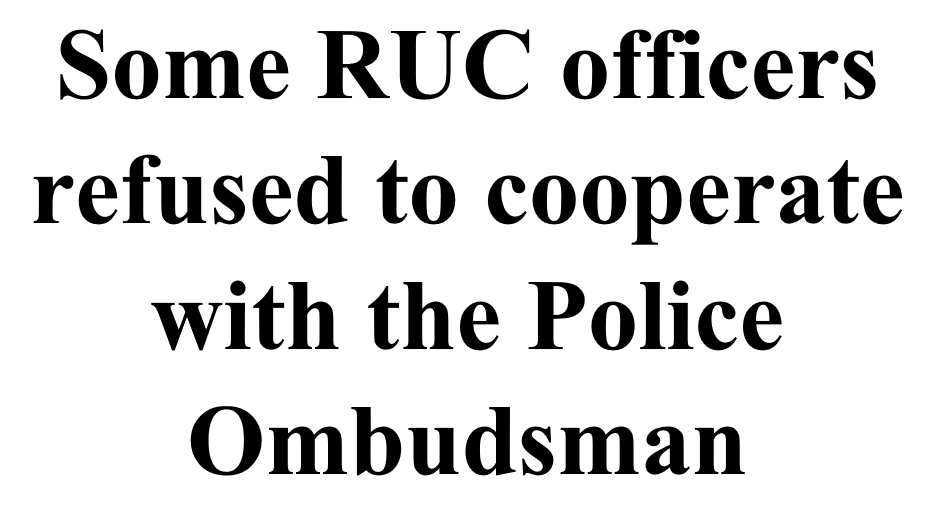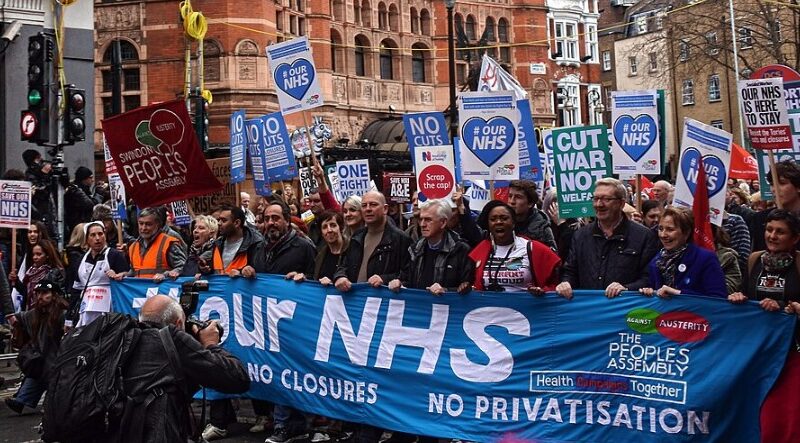By John Pickard
A report of the Police Ombudsman for Northern Ireland, released this week, has officially admitted the long-suspected links between the police and the paramilitaries, specifically known murderers in the Ulster Defence Association (UDA).
In the first half of the 1990s, the UDA, usually under the banner of the Ulster Freedom Fighters (UFF), were responsible for 56 murders in Belfast. All of the victims were Catholics.
The investigations of the Ombudsman centred on five people killed in Sean Graham’s betting shop in 1992, as well as other six murders, including a mother of two children, as well as attempted murders, all in the early 1990s. Eight members of the UDA, the Ombudsman found, were linked to the murders of eleven people, one of whom was a boy of 15.
The Ombudsman, Marie Anderson, not only found that there were significant failures in investigating these murders and attempted murders, and failures to pass on vital intelligence that would have saved lives, but there was clearly active “collusion” between UDA members and the now disbanded Royal Ulster Constabulary (RUC).
“…serious omission constitutes collusive behaviour”
In many cases, lives could have been saved if intelligence from UDA informants about UFF ‘targets’ had been passed to the police, instead of being sat on. The Ombudsman, expressed her “deep concern” at the scope and scale of the failings of the RUC, but that is nothing to the concern and outrage of the bereaved families, whose own concerns she found – thirty years later in some cases – to be “legitimate and justified.”
Given what she described as the “network of informants” of the RUC Special Branch, it is clear that intelligence that could have saved lives was not passed to the police. “There is no rationale” she wrote in the report, “for the failure to warn either Mr Caskey or Mr Clinton [Both attempted murders, although Mrs Clinton was subsequently murdered] of the real and imminent threats to their safety. I am of the view that this serious omission constitutes collusive behaviour”. Moreover, she found, such behaviour was “systemic.”
Ms Anderson even noted that supposed ‘de-activated’ weapons were handed by the police back to the UDA, even in the knowledge that the UDA had the capacity to re-activate them and no proper records were kept on who had the weapons. One of these re-activated weapons was subsequently used in the betting shop massacre as well as another murder.
After the release of the Ombudsman’s report, some of the families of the victims met with her. The daughter of one of the murder victims told the Belfast Telegraph, “My mother was murdered with an RUC weapon, a weapon used in other murders”.
Some former RUC officers refused to cooperate with Ombudsman
“The RUC officers who were involved in ‘investigating’ my mother’s murder refused to cooperate with teh Police Ombudsman”, she added. “The Police Ombudsman said a senior RUC officer decided not to warn my father, and that had he been warned, she finds that my mother’s murder could have been prevented.”

During the period being investigated, the UDA/UFF had as many as 150 members in south Belfast and it was one of its most active groups. Even after the Good Friday Agreement, the UDA still lives on, although now mostly as a gangster organisation dealing in drugs and prostitution. Catholics and ‘soft’ Protestants are still being harassed and intimidated, and sometimes forced out of their homes, but the main preoccupation of these thugs today is crime.
The official Ombudsman’s report can be read here, but it is worth noting that it really only shows the tip of an iceberg, a small part of the dirty war played out during the Troubles by the British Army and the police in Northern Ireland. It is not even the first report of its kind by the Ombudsman.
In additions, as the Ombudsman herself acknowledged, the scope of this inquiry and report were limited by a Court of Appeal judgement decision in 2020 and that partly explains her language, referring to the vague expression, “collusive behaviour”.
The Court of Appeal ruled that “former Police Ombudsman Dr Michael Maguire had “overstepped the mark” in finding RUC officers committed criminal acts of collusion with loyalists who massacred six Catholic men at The Heights bar in Loughinisland in June 1994”. (Irish News, Feb 9)
“But judges at the time rejected a bid by two retired senior policemen to quash the watchdog’s entire public statement on the Loughinisland atrocity. They accepted it had been appropriate for the ombudsman to acknowledge what he had uncovered was in line with the views of the victims’ families on corrupt relationships between security force personnel and the paramilitary killers”.

The forces of the state infiltrated to one degree or another all of the main paramilitary organisations, including the Provisional IRA and the UDA/UFF and UVF. The secret internal ‘security’ service, MI5 is still operating in Northern Ireland, where a large proportion of its operatives are still based. The Army and police have been implicated in a number of murders or attempted murders during the Troubles, including the attempted assassination of Bernadette Devlin in 1981.
None of this was done for ‘benign’ purposes or in the interests of ‘peace’ or the well-being of the majority of the population in the North, but to keep the ‘sectarian pot’ constantly on the boil, if within manageable limits. In the long term, notwithstanding the publication of this report by the Police Ombudsman, workers cannot rely on the state to reveal the full extent and scale of the dirty war conducted in Northern Ireland. However many years it might take, it will take the labour movement itself to uncover the full scope of state involvement in the Troubles.
As a postscript to this article, the Belfast Telegraph (February 10) reports that there are calls from the families of UDA murder victims for a public inquiry into the activities of the RUC Special Branch following the Police Ombudsman’s report.
The lawyer, Niall Murphy, who represents most of the families, said there should be a public inquiry taking the form of “a legal forum” with witnesses compelled to give evidence. “The farce of retired officers being able to ignore invitations to provide an account for their actions is no longer tenable”, he said, “when we consider the import of what successive reports have published”.
The Ombudsman had found that a that gun used to murder a mother of two in Belfast in 1994 was an RUC personal protection weapon that had been reported stolen, but the officer who had owned the gun had refused to cooperate with the Ombudsman’s investigation.
“The series of killings referred to this week was perpetrated by a loyalist gang which clearly had free rein to murder and cause chaos in the late 80s and early 90s,” said Mr Murphy. “It is very difficult to come to any conclusion other than that there was a cabal within Special Branch who were devoted to destabilising the peace process”.
Postscript added February 10



